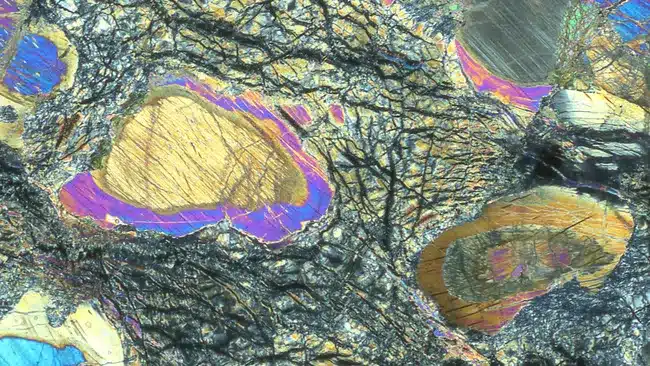The unprecedented drilling operation reached an astonishing depth of 1.2 kilometers (0.75 miles) at the Mid-Atlantic Ridge, a region where the sea floor is being spread apart, allowing mantle rocks to emerge. This remarkable feat was accomplished as part of the International Ocean Discovery Program using the research vessel JOIDES Resolution.
Scientists targeted a site near the Lost City, an area filled with hydrothermal vents. This unique site, characterized by beehive-like formations and tall structures, releases molecules such as methane and hydrogen that support diverse microbial and invertebrate communities.
The drilling process presented numerous challenges due to the brittle nature of the mantle rock, which is prone to collapse. However, the team experienced tremendous luck as the material allowed smooth drilling and facilitated the extraction of nearly intact rock samples over a continuous distance of more than 70% of the core.
This achievement far surpasses previous attempts, which had only reached a depth of 201 meters. The extracted samples provide an unprecedented window into the geological and microbial processes occurring beneath the Earth’s surface, providing valuable insights into the inner workings of our planet.
Redefining our understanding of mantle dynamics
The implications of this discovery are far-reaching, challenging traditional notions of mantle motion and convection. Previously, scientists believed that mantle melt moved primarily vertically due to convection forces. However, the new data suggest that mantle movements may be more complex, involving steep displacements that may affect how mantle materials mix and migrate.
This discovery has important implications for our understanding of the formation and distribution of geological resources. Oblique trajectories of mantle melts can affect how minerals and elements are distributed throughout the Earth’s crust, potentially influencing the formation of mineral deposits and geological structures.
Furthermore, this discovery sheds light on the changes in mantle composition, often described as having different geochemical “flavors” depending on melting zones and plate tectonic recycling processes. The insights gained from this research could revolutionize our understanding of Earth’s internal dynamics and their influence on surface phenomena.


Exploring the limits of life in extreme environments
One of the most intriguing aspects of this discovery is its potential to reveal the limits of microbial life under extreme conditions. By extracting samples from depths where temperature and pressure are extremely high, researchers aim to understand the limits of microbial survival.
The ability of microorganisms to thrive in such harsh environments may provide crucial clues about the origins of life on Earth and the possibilities of extraterrestrial life under similar conditions on other planets. This research complements other ground-breaking discoveries in the field of astronomy, such as the unexpected discovery of lone quasars of mysterious origin, which continues to baffle scientists and expand our understanding of the universe.
To better illustrate the importance of this discovery, consider the following comparison:
| aspect | Previous registration | New achievement |
|---|---|---|
| Drilling depth | 201 meters | 1200 meters |
| Sample integrity | Fragmented | Almost intact |
| Scientific impact | Limited views | Paradigm-shifting data |
Advances in tectonic studies and plate dynamics
This unprecedented drilling depth marks a turning point in research into tectonic movements and plate dynamics. The data collected can significantly improve our understanding of how forces acting beneath the Earth’s crust affect earthquakes, volcanic eruptions and the movement of continental plates.
Scientists can now develop new models to predict and interpret seismic and volcanic activity, especially in subduction zones and plate divergence zones. This progress reinforces the importance of the Mid-Atlantic Ridge as a key site for studying interactions between the Earth’s mantle and crust, paving the way for even deeper exploration projects in the future.
The implications of this research extend beyond our own planet, potentially informing our understanding of geological processes on other celestial bodies. Just as this discovery has rewritten our knowledge of Earth’s internal structure, other fields of study continue to challenge our assumptions. For example, the discovery of the smallest dinosaur egg ever found in China has similarly reshaped our understanding of prehistoric life.
In summary, this groundbreaking achievement in mantle drilling represents a quantum leap in our quest to understand Earth’s inner workings. By providing unprecedented access to the planet’s mantle, scientists have uncovered a treasure trove of data that will undoubtedly revolutionize many fields of study, from geology and plate tectonics to astrobiology and the search for extraterrestrial life.
